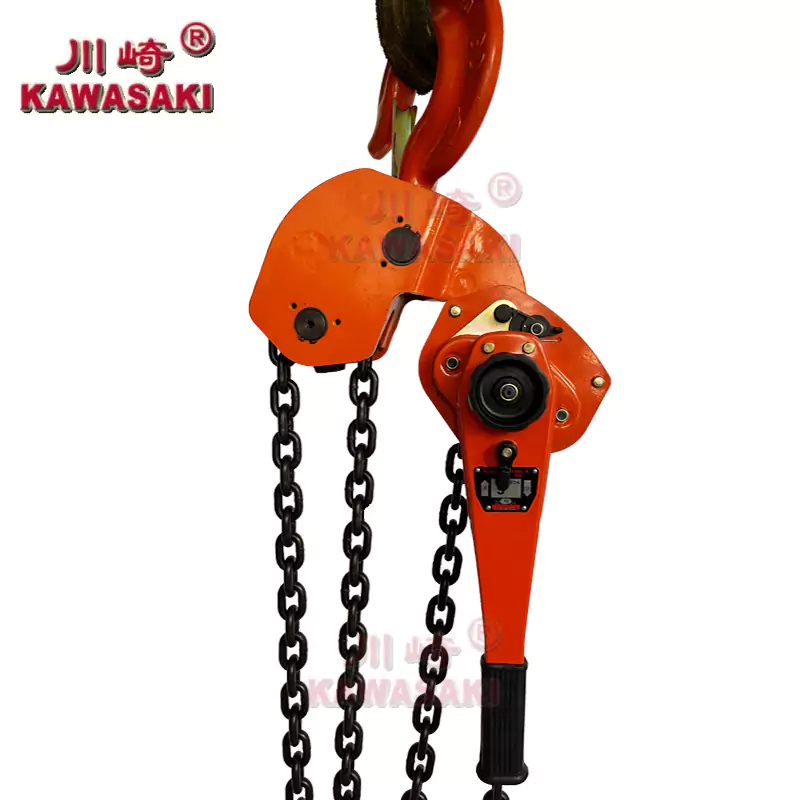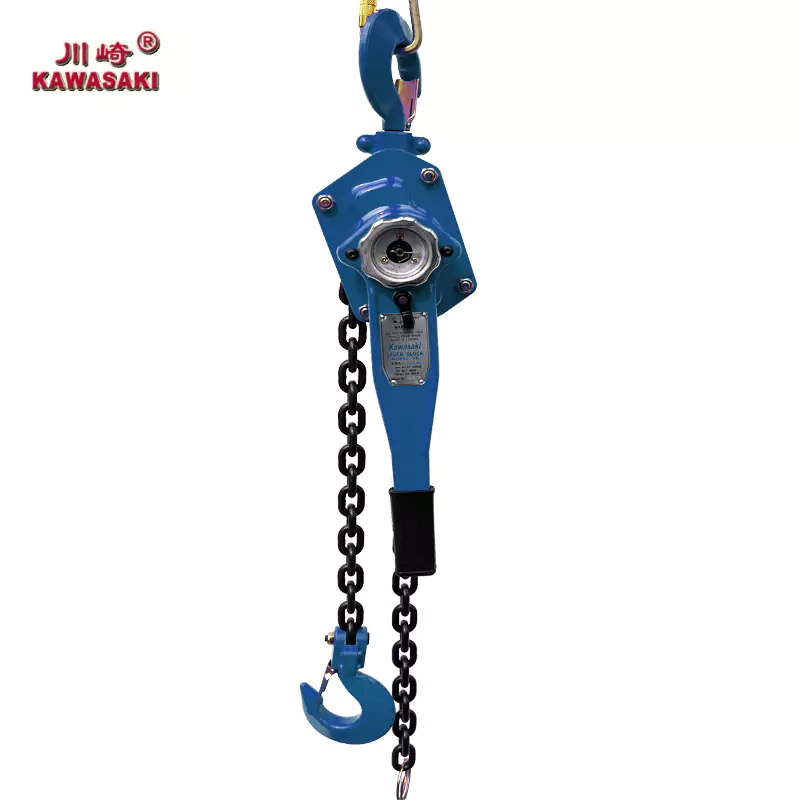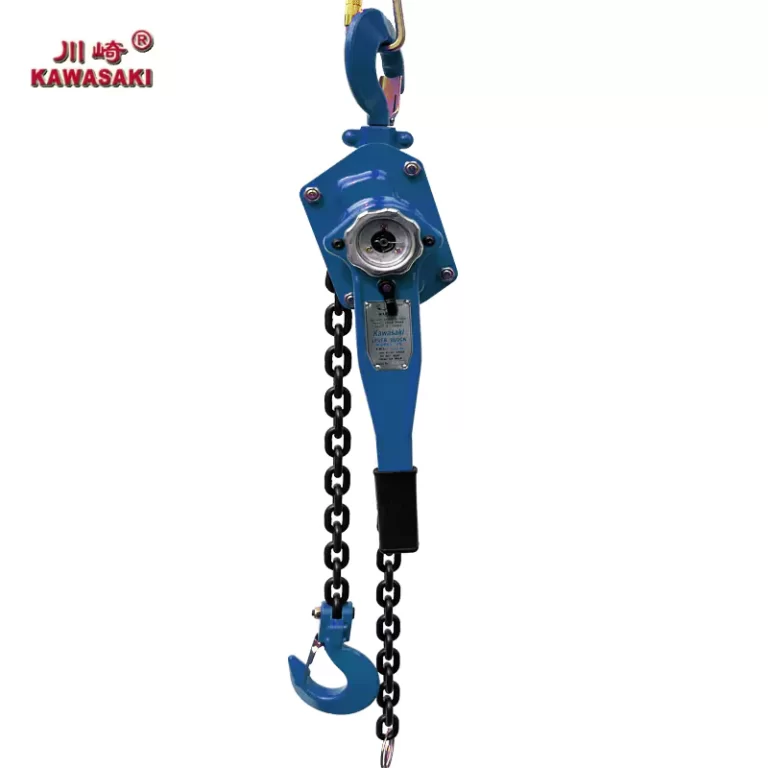It is essential to consider your needs and applications when choosing between using a chain hoist or a lever hoist in the workplace. When you have an understanding of how you will be utilizing your lifting or pulling requirements, you are then primed to choose the tool that is going to bring the most effective benefit to your workspace in terms of efficiency and safety.
Understanding the Fundamentals of Chain and Lever Hoists
One of the most popular tools in your workspace for lifting heavy loads could make a difference. There are two common alternatives: a chain hoist or a lever hoist. Both are nice in their own way, but the key to knowing which solution fits your needs is to understand their basic functionality. They both have their advantages, however knowing specifically what each does is the first step to figuring out what is best for you.
Defining Chain Hoists
Chain hoists are simple devices that lift and lower loads using a chain. They are very commonly used in industrial production, agricultural production and even family life. The chain is the most common of these tools, consisting of a loop and also linked to a joy wheel plus using a carabiner to tie the pile. It enables increased capabilities of lifts, often in the tens or even hundreds of tons. Apart from hand chain hoists, electric hoists are more productive and safer when fitted with optional overload protection devices.
Defining Lever Hoists
In contrast, a lever hoist is a portable lifting device that utilizes a ratchet and pawl mechanism to lift or pull heavy loads. Lever hoists do not have this requirement and can be operated without an overhead structure (unlike chain hoists). Even better, they’re extraordinarily versatile for all types of work, particularly in tight spaces. They are best suited for a process where full control over the movement of the load is required.
Operational Mechanisms: How Each Hoist Works
Understanding how each type of hoist operates can help you make an informed decision on which is more suitable for your requirements.
Mechanical Functionality of Chain Hoists
Chain hoists work on the principle of pulling a hand chain that moves the gears within the device. This motion moves the load above or below the hook. Thanks to the way the gear system transmits force through its ratio, the user can lift heavy loads with little effort. The electric chain hoist improves this performance — the hoist lifts the object with the help of a motor, allowing for brighter speeds and removing the hard effort of lifting.
Mechanical Functionality of Lever Hoists
A lever hoist works by using a lever handle to move a ratchet mechanism. The gears will raise or lower the cargo incrementally as you move the handle back and forth. Such design offers a high degree of control over the position of the load, which is beneficial for applications requiring accuracy. The design of this precise control over the positioning of the load makes it useable for applications where precision is needed.
Comparative Analysis: Performance and Efficiency
Both types of hoists have their strengths in terms of performance and efficiency. Comparing these aspects can help determine which tool reigns supreme in your workspace.
Load Capacity and Durability
The load capacity range of chain hoists is typically much higher than that of lever hoists as they are heavier and built with a gear system. The limited load capacity of the electric hoist can be up to dozens of tons or even hundreds of tons, which is suitable for heavy-duty use.
Lever hoists usually have lower load capacities but excel in portability and ease of use in confined spaces. They are designed for lighter loads but offer precise control over movement.

Precision and Control in Operations
Control Mechanisms in Chain Hoists
Chain hoists provide precise control through their gear systems, allowing smooth operation even with heavy loads. Electric models enhance this precision with features like frequency converters for automated control.
Control Mechanisms in Lever Hoists
Lever hoists offer exceptional control due to their ratchet mechanism, allowing incremental adjustments to load position. This makes them ideal for tasks requiring exact placement of materials.
For those seeking high-quality lifting solutions tailored to specific needs, APOLLO offers an extensive range of products.
Safety Considerations and Maintenance Requirements
When incorporating hoists into your workspace, safety is paramount. Both chain and lever hoists come equipped with features designed to ensure user safety and prolong the tool’s lifespan.
Safety Features of Chain Hoists
Most chain hoists are equipped with safety devices, such as safety limit switches and overload protection devices, to provide a high level of operational safety. These features ensure the hoist doesn’t go overweight, which in turn minimizes the chances of an accident.
Safety Features of Lever Hoists
Lever hoists, known for their portability, also incorporate safety mechanisms. The ratchet and pawl system ensures secure load holding, even when the handle is released. This feature is crucial for maintaining control over loads during operation.
Cost Implications and Investment Value
Investing in the right hoist involves understanding both initial costs and long-term value. Different factors influence these costs for chain and lever hoists.
Initial Purchase Costs
Cost Factors for Chain Hoists
Chain hoists vary in price due to their quality in terms of material, load capacity, and whether they have additional features such as automation capabilities. Since electric models come with a motor system and advanced control, they may come at a greater initial price.
Cost Factors for Lever Hoists
Lever hoists generally have lower initial costs compared to electric chain hoists. Their simple design and manual operation contribute to reduced pricing, making them an economical choice for lighter tasks.
Long-term Investment Considerations
Evaluating the Return on Investment
Long-term investment points out that price in terms of buying is not the only point to look at but rather also on the cost of maintenance and life span of the tools. While the upfront costs for electric chain hoists may be high, they provide more operational efficiency and longer service life, ensuring greater returns over an extended period.
Choosing the Right Tool for Your Workspace Needs
Selecting the appropriate hoist depends on various factors specific to your operational requirements.
Factors to Consider When Selecting a Hoist
Key considerations include load capacity needs, workspace constraints, frequency of use, and budget limitations. Understanding these elements will guide you toward a tool that aligns with your operational goals.
Recommendations Based on Apollo’s Product Offerings
APOLLO offers a wide variety of customized lifting products from electric chain hoist models with explosion-proof features to 110V-575V voltage customization, providing fast and reliable solutions. They are tailored for multiple applications so you’ll find one that suits your workstation needs. APOLLO has a brand——KAWASAKI, click here for more information!
FAQs
Q1: What are the key safety features of chain hoists?
A: Chain hoists often include safety limit switches and overload protection devices to prevent overloading and ensure safe operation.
Q2: Are chain hoists more expensive than lever hoists?
A: Generally, chain hoists come with a higher upfront price as compared to lever hoists because of their sophisticated mechanism and automation options. Lever hoists are cheaper as they have a simple manual design.
Q3: What factors should be considered when choosing between a chain or lever hoist?
A: Consider load capacity requirements, workspace size constraints, usage frequency, and budget when selecting the most suitable hoist for your needs.


